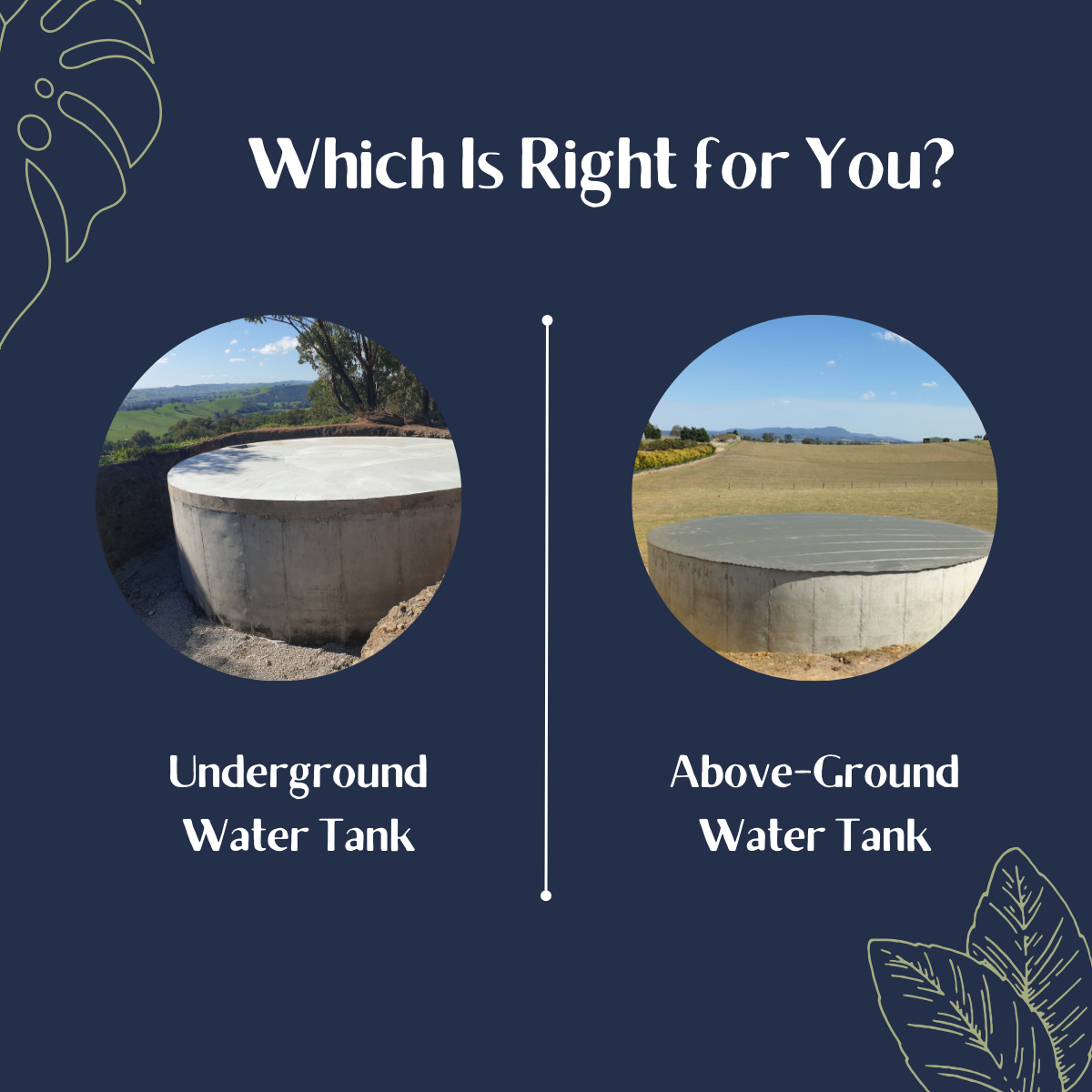When it comes to water storage solutions, choosing between an underground and above-ground water tank can be a significant decision for homeowners and businesses alike. Both options offer distinct advantages, but which one is right for you? In this blog, we'll explore the key differences between underground and above-ground water tanks to help you make an informed decision based on your specific needs.
1. Space Efficiency
One of the most obvious differences between underground and above-ground water tanks is the space they occupy.
- Underground Water Tanks: If you have limited space, underground tanks are ideal. They are buried beneath the surface, leaving your yard or outdoor areas unobstructed. This is a great option for urban settings where outdoor space is a premium.
- Above-Ground Water Tanks: These tanks are installed on the surface, making them more visible and potentially taking up valuable yard space. However, they can be more convenient to access for maintenance.
Verdict: If preserving yard space and aesthetics is important to you, underground tanks are the way to go.
2. Aesthetic Considerations
For many homeowners, the appearance of their property is a top priority.
- Underground Water Tanks: These tanks are completely out of sight, making them an ideal choice for those who want to maintain the visual appeal of their landscape. No need to worry about large tanks detracting from your home’s aesthetic.
- Above-Ground Water Tanks: Above-ground tanks, while functional, are visible and can affect the visual flow of your outdoor space. However, you can choose tanks in colors that blend with your environment, or even incorporate landscaping around them.
Verdict: If aesthetics are a concern, underground water tanks offer a more discreet solution.
3. Installation Costs
Costs for installation can vary depending on several factors.
- Underground Water Tanks: Installing an underground tank requires excavation, which can increase the cost of installation. There are additional factors such as soil conditions, tank placement, and plumbing needs that can also affect costs.
- Above-Ground Water Tanks: These tanks are generally cheaper to install since they don't require excavation. They can be set up more quickly and easily compared to underground tanks.
Verdict: Above-ground water tanks are typically more affordable in terms of installation costs.
4. Durability and Protection
The lifespan and protection of your water tank is an important consideration.
- Underground Water Tanks: Buried tanks are protected from the elements such as UV radiation, extreme temperatures, and weather events. This can increase their longevity and reduce wear and tear.
- Above-Ground Water Tanks: These tanks are more exposed to weather conditions, which can lead to potential damage over time, especially from UV exposure, storms, and temperature fluctuations.
Verdict: Underground water tanks tend to be more durable and better protected from environmental wear and tear.
5. Maintenance Needs
Maintenance is a crucial factor when deciding on a water tank.
- Underground Water Tanks: Maintenance can be more challenging with underground tanks due to their location. Accessing the tank for cleaning or repairs may require digging or specialized tools, increasing time and effort.
- Above-Ground Water Tanks: These tanks are easier to access for routine maintenance, cleaning, or repairs. You can quickly inspect them without the need for excavation or specialized equipment.
Verdict: If easy access for maintenance is a priority, above-ground tanks are more convenient.
6. Temperature Regulation
The environment your tank is in can affect water temperature.
- Underground Water Tanks: Since they are buried, underground tanks benefit from the earth’s natural insulation, which helps maintain a more consistent water temperature year-round.
- Above-Ground Water Tanks: Above-ground tanks are more susceptible to external temperature changes, which can cause water to heat up in the summer or freeze in the winter.
Verdict: Underground tanks offer better temperature regulation, making them ideal for areas with extreme temperatures.
7. Environmental Impact
Both types of tanks can be environmentally friendly, but some factors might sway your decision.
- Underground Water Tanks: These tanks are more efficient in using space and maintaining water quality, but the excavation process during installation can have a short-term environmental impact.
- Above-Ground Water Tanks: These are easier to install and cause minimal disturbance to the surrounding environment during setup.
Verdict: Both tanks can be eco-friendly, but if minimizing installation impact is a priority, above-ground tanks might be more suitable.
Conclusion: Which Tank is Right for You?
The choice between an underground and above-ground water tank depends on your specific needs and preferences. If space-saving, aesthetics, durability, and consistent water temperature are important to you, an underground water tank may be the best choice. However, if you’re looking for a more affordable, easily accessible, and quicker-to-install solution, an above-ground water tank might be more suitable.
Assess your priorities—whether it’s cost, space, maintenance, or environmental impact—and choose the option that best fits your home and lifestyle. Regardless of your decision, both underground and above-ground tanks are excellent solutions for efficient water storage.
